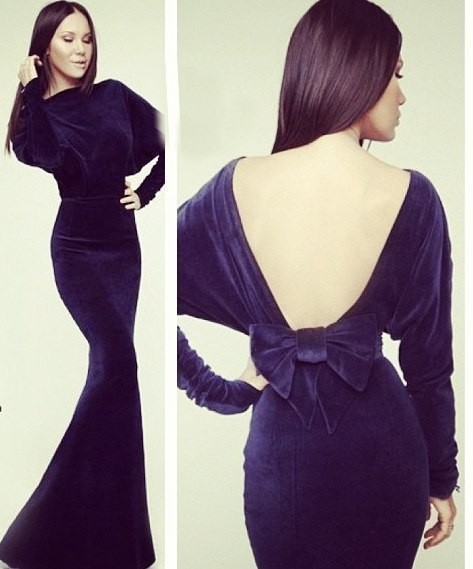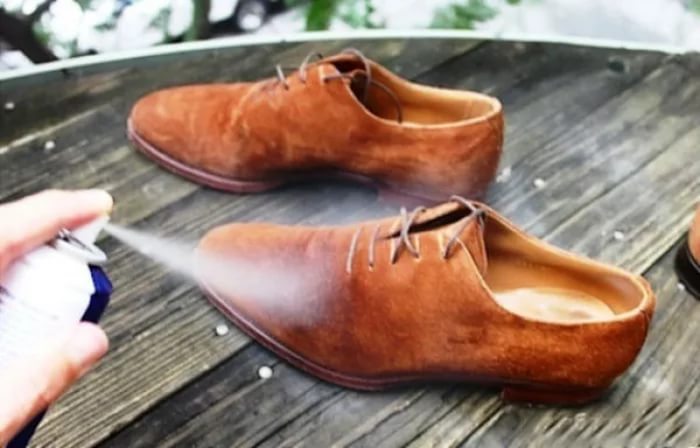An alternative to luxurious, but very expensive velvet was invented in the East back in the Middle Ages. Velor plays this role. At that time, the material was also expensive and available only to wealthy people. Over time, technologies have changed, they began to produce it from different types of raw materials, and the material became available to the general public. Nowadays velor fabrics are found in every home and are found at every step. What kind of fabrics are these and where they are used, read about it further.
What kind of material is this - velor?
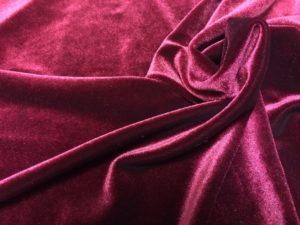 This is a collective concept. It combines a group of soft pile materials with a velvety surface, made from natural or synthetic fibers. Silk, cotton, wool, viscose, as well as lycra, elastane, and polyester fibers are used as the main or auxiliary thread for the production of velor fabrics.
This is a collective concept. It combines a group of soft pile materials with a velvety surface, made from natural or synthetic fibers. Silk, cotton, wool, viscose, as well as lycra, elastane, and polyester fibers are used as the main or auxiliary thread for the production of velor fabrics.
Externally, velor fabric is very similar to velvet, but differs in longer pile, which is obtained using a special, base-pile, material production technology. For velor, a one- or two-sheet type of looped or split method is used. This means that the resulting fabric either has loops, or these loops are cut, leaving a smooth, velvety pile on the front side.
Important! A small synthetic additive improves the properties of the fabric: it becomes more durable, wear resistance increases while maintaining an attractive appearance and basic properties.
Pros and cons of velor
Such fabrics have many advantages:
 luxurious appearance of the front surface;
luxurious appearance of the front surface;- formation of light shine and interesting undertones;
- excellent ability to drape and form soft folds;
- pleasant tactile sensations;
- comfortable feeling when using the product;
- good thermal insulation and ventilation properties due to the air layer between the fibers;
- dense base guarantees the strength of the product;
- no shrinkage and preservation of the original shape;
- resistance to dyes and shedding;
- crease-resistant and crease-free;
- material on a linen basis does not stretch, but on a knitted basis it quickly restores its shape;
- ease of care.
Unfortunately, these fabrics have not only positive qualities. There are also some disadvantages that potential consumers should be aware of:
- sometimes the fibers can break, which suggests an untidy appearance of the product;
- without the addition of artificial fibers, velor is susceptible to abrasion;
- due to its fleecy structure, the fabric is capable of attracting dust and collecting dirt;
- Ironing items made from fleecy fabrics is fraught with loss of softness, airiness and the appearance of creases on the front side of the material.
Types of velor
Fleece fabrics are made from a wide variety of raw materials. Cotton, wool, synthetic threads and even leather can act in this capacity. Each of these species has its own name, but they are all united into a group by one feature - a fleecy surface.
Yarn
 Needlewomen love to knit cozy, soft sweaters, sweaters, cardigans and even children's toys from chenille yarn. This is a special type of cotton thread in which treated fibers are aerodynamically fixed to the base.. They fall on the thread at the moment of twisting it with the help of an air flow and are firmly fixed there at right angles to the reinforced base.
Needlewomen love to knit cozy, soft sweaters, sweaters, cardigans and even children's toys from chenille yarn. This is a special type of cotton thread in which treated fibers are aerodynamically fixed to the base.. They fall on the thread at the moment of twisting it with the help of an air flow and are firmly fixed there at right angles to the reinforced base.
The structure of the yarn is loose, so it is recommended to use knitting needles for hand knitting. This yarn does not hold its shape, patterns and braids are not visible on it; ordinary types of elastic look a little sloppy. However, a chenille sweater will keep you as warm as a pure wool one due to the excellent heat-conducting properties of the yarn.
Fur
 Velor can be not only fabric, but also made from animal skin. Fur velor is the front surface of a sheepskin coat. In fact, this is the inner, melon layer, the least valuable of the entire hide, but tanned in a special way, dyed and processed to a uniform fleecy surface by sanding the leather. The most valuable layer - the fur - is turned inside the product to warm a person in the cold. The melon layer - fur velor - also helps retain heat and is also responsible for the aesthetic appearance of the sheepskin coat.
Velor can be not only fabric, but also made from animal skin. Fur velor is the front surface of a sheepskin coat. In fact, this is the inner, melon layer, the least valuable of the entire hide, but tanned in a special way, dyed and processed to a uniform fleecy surface by sanding the leather. The most valuable layer - the fur - is turned inside the product to warm a person in the cold. The melon layer - fur velor - also helps retain heat and is also responsible for the aesthetic appearance of the sheepskin coat.
Leather
This type of velor is sometimes mistakenly called suede, but this is incorrect.Suede has several characteristic differences and is much less common than leather velor or its cheaper and lower quality analogue - split velor. Almost all so-called suede shoes, with the rare exception of very expensive boots, are made of velor leather.
Velor is obtained from the manufacture of the inner, lowest layer in those leathers where the front surface has any flaws. Its surface is turned over so that the front layer appears inside the product. Split velor is obtained by removing the top and bottom layers from the skin. This material is inferior in quality to its counterparts, but it looks attractive, is inexpensive and is suitable for careful wearing of many footwear and gloves.
Artificial
The basis is synthetic threads - elastane, lycra, polyester in different ratios and combinations. Such fabrics have increased wear resistance. This indicator is especially high for fabrics used as car covers and upholstery of car interiors.
Microliner
 This is one of the varieties of velor made from artificial fibers. Microliner is rightfully considered one of the best materials, since its main qualities are high wear resistance and a comfortable feeling during operation. He often used to make shoe linings and insoles.
This is one of the varieties of velor made from artificial fibers. Microliner is rightfully considered one of the best materials, since its main qualities are high wear resistance and a comfortable feeling during operation. He often used to make shoe linings and insoles.
Microliner is distinguished by its excellent appearance, durability and abrasion resistance. Inside a pair of shoes, the fabric structure with increased moisture permeability provides an excellent microclimate and special comfort.
Drape
The most interesting, valuable, but also the most expensive type of such fabric is drape velor. It is made from wool fibers, and the raw material is merino wool.That is why the fabric is very expensive, but also has exceptional quality and belongs to luxury materials, and it owes its beautiful appearance to the satin weave of the threads.
Woolen
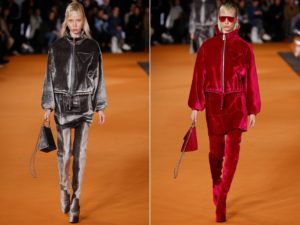 This type of velor is obtained from cloth yarn, which is not combed out during the production process. It forms a low, thick pile, fluffy and most suitable for sewing warm products. Outerwear and hats are made from it.
This type of velor is obtained from cloth yarn, which is not combed out during the production process. It forms a low, thick pile, fluffy and most suitable for sewing warm products. Outerwear and hats are made from it.
Cotton
This is the most common type of fleecy fabric. It is soft, very pleasant to the body, and wear-resistant. This is such a comfortable fabric that even small children can make clothes from it. Cotton is also used to produce velor knitwear, which is very widely used for sewing children's and sportswear. Another view - velor terry – present in our apartments as a source material for towels, sheets, bathrobe or robe.
Classification of velor fabric by appearance
According to the way the pile is arranged on the canvas, velor fabrics can be of the following types:
- smooth - with vertically located fibers;
- shaped - with alternating vertical and smooth sections;
- embossed - with a pile laid out like an intricate design.
There is also a division of velor fabrics according to the methods of weaving threads in combination with pile:
 knitwear - the base is not woven, but knitted, which is widely used in sewing elastic sportswear, various interior and dress draperies, as well as for children's clothes;
knitwear - the base is not woven, but knitted, which is widely used in sewing elastic sportswear, various interior and dress draperies, as well as for children's clothes;- drape velor – high-quality merino wool with a satin weave;
- jacquard is a beautiful patterned fabric created by interweaving several types of threads;
- moiré is a material with changing shades and piles of unequal length in different directions.
Such fabrics can be dyed in one color, then the result is a smoothly dyed material. Another method can also be used: a printing machine applies a design to the surface of the fabric. This material is called printed material.
Important! Velor can be dyed in the finished fabric or threads of the desired colors can be used to produce it.
Scope of application of velor
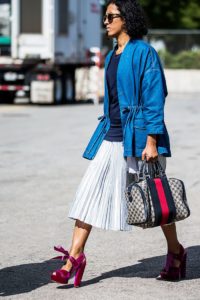 It has universal properties and is used in many areas of modern life. First of all, for clothing production: night pajamas, a dressing gown, a variety of children's sets and overalls, an evening dress, a stylish jacket, a tracksuit, cozy knitwear, a warm coat, a chic sheepskin coat, a hat - this is an incomplete list of things with a fleecy surface that we use literally every day.
It has universal properties and is used in many areas of modern life. First of all, for clothing production: night pajamas, a dressing gown, a variety of children's sets and overalls, an evening dress, a stylish jacket, a tracksuit, cozy knitwear, a warm coat, a chic sheepskin coat, a hat - this is an incomplete list of things with a fleecy surface that we use literally every day.
Can't be ignored velor shoes, which looks more luxurious and attractive than leather, but requires more careful handling: shoes, sandals, clogs, boots and ankle boots, boots and the now popular over the knee boots. And accessories – bags, clutches, suitcases, belts, wallets, eyeglass cases. These items are also made from brushed leather materials of various finishing methods.
Velor has found widespread use in the interior. Many are the owners of velor curtains, drapes, lambrequins, furniture upholstery, bedspreads, and decorative pillows. But let’s also not forget about car enthusiasts who purchase for their four-wheeled pets covers made of artificial velor materials.
How is it different from suede and velvet?
Leather velor is sometimes confused with suede, but there are several differences that directly indicate that it belongs to one or the other material. Velor has the following properties:
 one-sided pile;
one-sided pile;- a trail of crushed fibers remains on the surface, like a fingerprint, and they do not rise to their original position on their own;
- the material absorbs and allows water to pass through;
- has a uniform color.
Suede differs from velor in some characteristic features:
- waterproof;
- surface treatment on both sides;
- absence of pile damage;
- the presence of heterogeneously colored areas.
You can distinguish velvet from velor by the following characteristics:
- in terms of raw materials - velvet is made from silk, velor - from cotton, wool;
- in terms of pile height – velvet has it shorter;
- according to tactile sensations - velor is softer;
- in terms of price - velvet is more expensive.
How to distinguish natural velor from artificial?
 When it comes to fabric, the first thing you need to pay attention to is the base. Examine the back of the product; it is the warp thread that will tell you whether it is natural or a synthetic material..
When it comes to fabric, the first thing you need to pay attention to is the base. Examine the back of the product; it is the warp thread that will tell you whether it is natural or a synthetic material..
But we can distinguish natural fur velor from its artificial cheap analogue by several characteristics. The artificial material has the following properties:
- the presence of a fabric or other glued base;
- shiny, non-crumpling pile;
- formation of a fold or crease when bending;
- the material does not “breathe”, therefore, if you cover any area with your hand and hold it for 10–20 seconds, your palm will sweat slightly.


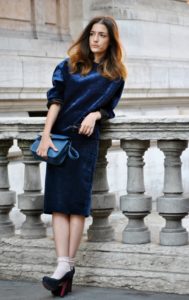 luxurious appearance of the front surface;
luxurious appearance of the front surface; knitwear - the base is not woven, but knitted, which is widely used in sewing elastic sportswear, various interior and dress draperies, as well as for children's clothes;
knitwear - the base is not woven, but knitted, which is widely used in sewing elastic sportswear, various interior and dress draperies, as well as for children's clothes; one-sided pile;
one-sided pile; 0
0